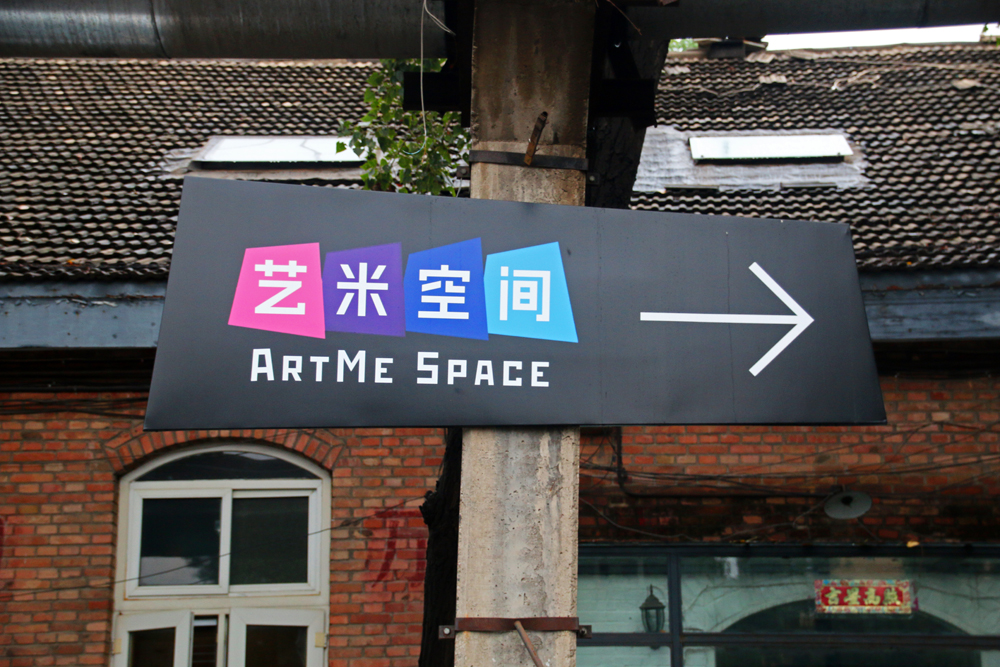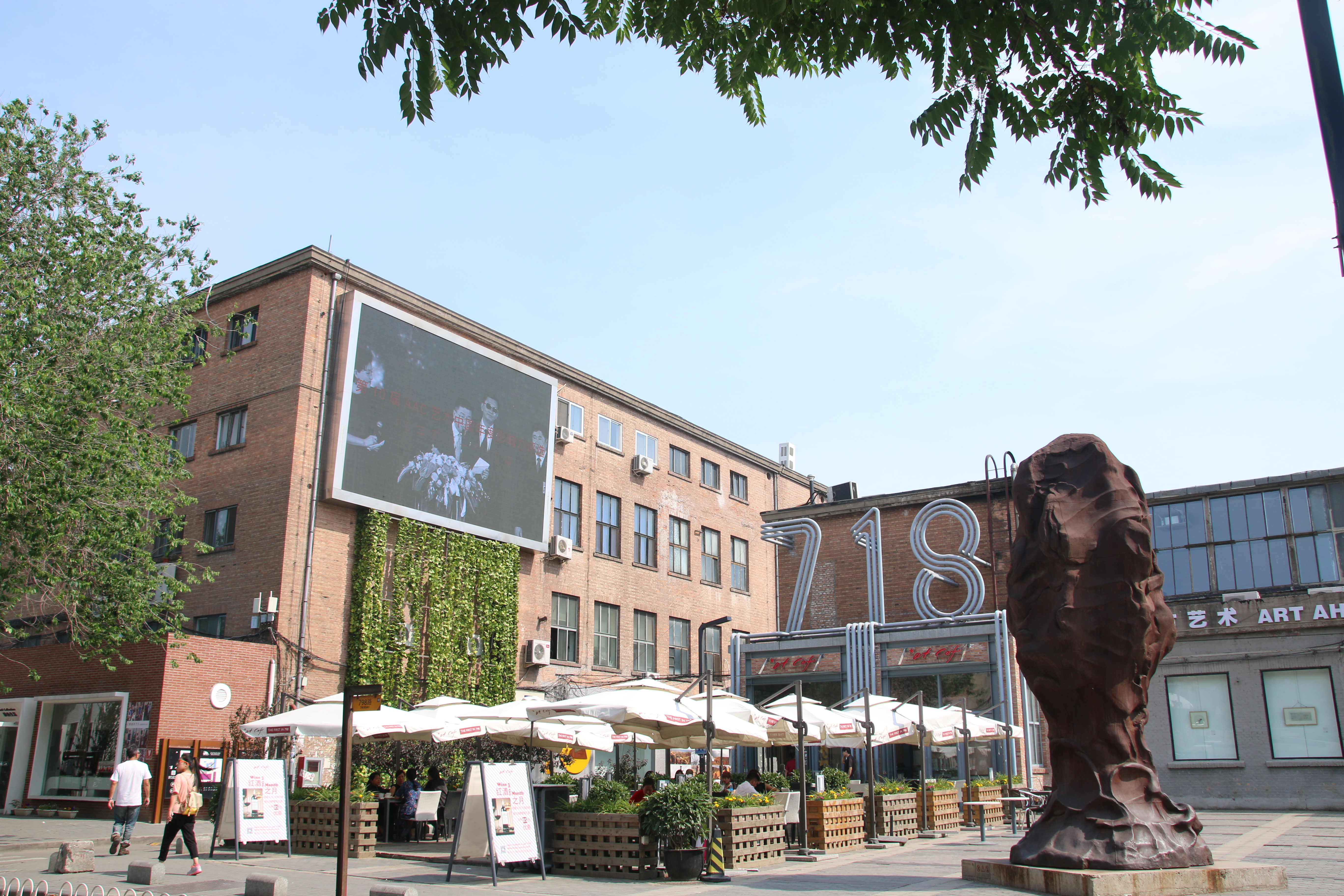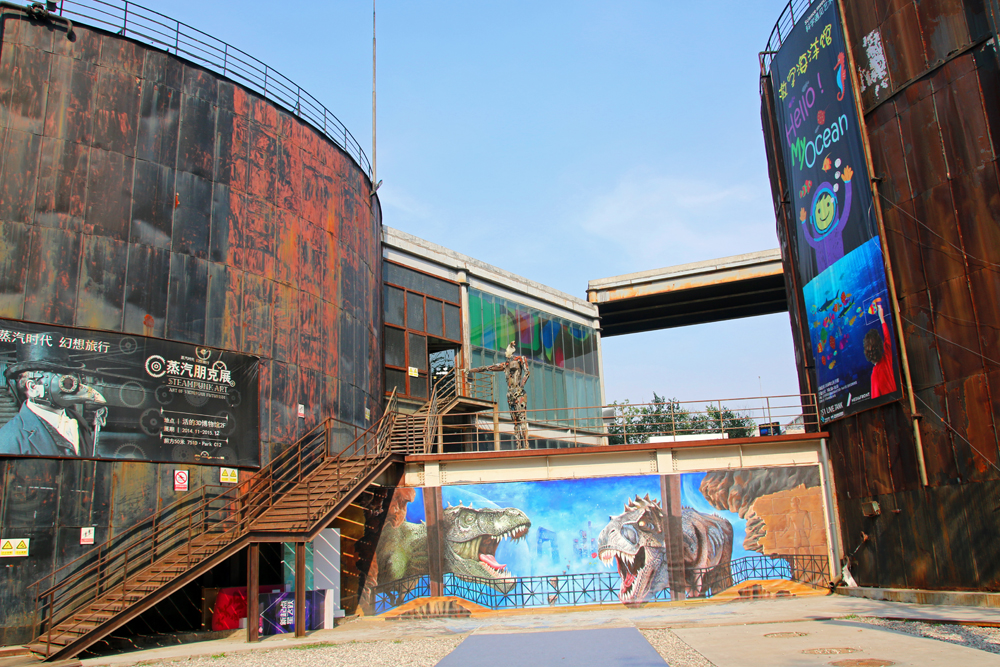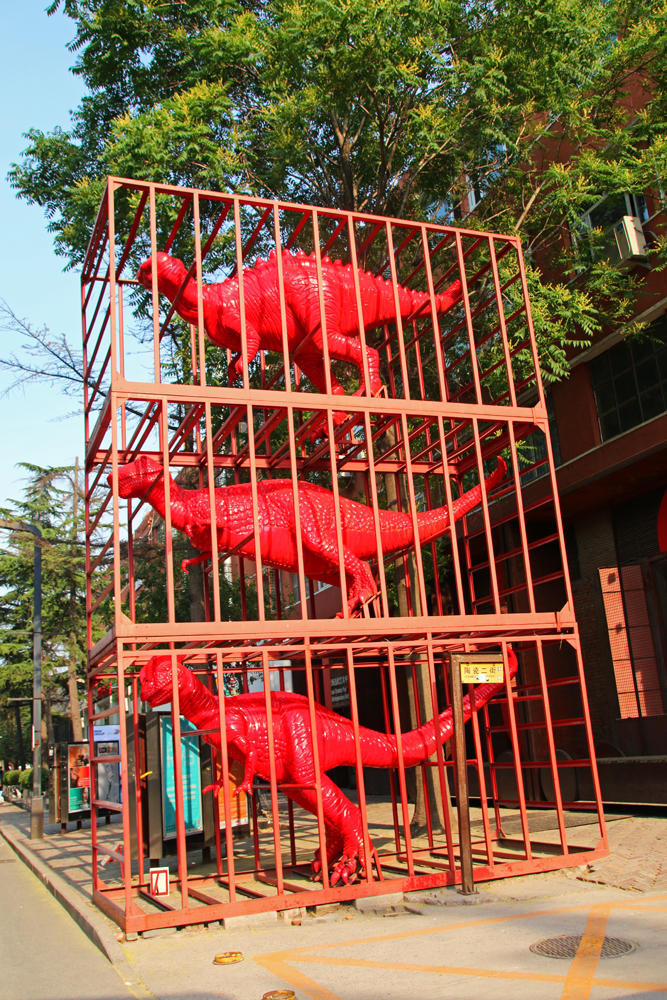The rice paddies shimmered golden in the afternoon sun. Then just around the corner, a huge crowd of golden spiders crawled onto me. No, I wasn’t in a horror movie, I was visiting a Tibetan exhibition called “The Rice Way” in a gallery in the Beijing 798 Art Zone, a hip side of the city. Also, the paintings and sculptures were mainly executed in gold, brown, blue, and copper. The building, in which the exhibition was held, was surrounded by Tibetan prayer flags, and the entrance was guarded by a golden horse and a golden rhinoceros.
 Golden spiders
Golden spiders







Beijing 798 wasn’t always an Art Zone. In 1951 it was just one factory for electronic components which became soon part of a larger complex called Joint Factory 718. In the early 1950s, there was high demand for electronic products which led to the construction of industrial plants of 640.000 square meters on the grounds of Dashanzi, back then farmland northeast of Beijing, and nowadays how the Beijing 798 Art Zone is also called. East German architects and designers of the former DDR imported the Bauhaus style. But 798 wasn’t only a workplace. The workers and their families lived and had a social life there with lots of amenities and events. This continued until the late 1970s to the 1990s when more and more of the factories were disused and the workers and their families left. By and by contemporary artists of all art forms moved to Dashanzi. Nowadays the Beijing 798 Art Zone is a hip side of the city, an accumulation of galleries and exhibitions, street art, handicraft shops, bookstores, fashion boutiques, cafés, and restaurants.
An afternoon in the Beijing 798 Art Zone
I headed to the Beijing 798 Art Zone for the first time in September 2014. I had heard a lot of great things about it so I decided to go there during my third visit to Beijing. It is not as touristy as Tiananmen Square and the Forbidden City, the Temple of Heaven, or the Summer Palace – however, it is also not a hidden gem anymore.
I was lucky. Probably due to the cloudy day there weren’t that many people. After visiting the Tibetan exhibition “The Rice Way” I wandered through the streets of the former factory site. I encountered a historical locomotive, artful graffiti, modern sculptures, and figures and strolled through some of the galleries and shops before finishing the day in a lovely café, in their conservatory with a glass bottom, on the first floor. There I met a lovely couple from the UK who had been on a business trip in Mongolia before coming to Beijing. They had done a hike from the Jiankou to the Mutianyu section of the Great Wall together with my friend Mill with whom I had “conquered” the Gubeikou Great Wall the day before their hike.

















My second visit to the artists’ quarter
I returned to the artists’ quarter this year in May. The Beijing 798 Art Zone is huge and is divided into four big sections (not counting sections C and F) which are arranged like the capital letter T. I didn’t really know which part I had visited in 2014 but I had definitely planned to explore a different part of the factory side than last time and specifically ordered a taxi there, telling the bell boys and the taxi driver that I wanted to be dropped off at the main entrance of the Beijing 798 Art Zone. I was sure that last time I didn’t enter it from there. Guess, what happened?
The driver dropped me off at the main road and pointed to the other side of the road, apparently demonstrating that there was the main entrance. While the area seemed to be new to me at the beginning the surroundings became familiar after a few steps. I was in the same block 19 months before which was block E. At first, I passed by the same modern figures, galleries, and shops as last time but then I took a different way and discovered a new area.







I encountered different sculptures and figures, walked by an Audi site, and eventually reached two huge tanks which apparently inhabited exhibitions. While one of them was closed the other one was home to a 3D amusement place named “My Ocean”. I continued to another huge tank called the “Gasometer” where art students had organized a fashion show, apparently as part of their graduation. All of them were festively dressed, they were hugged by families and friends, and presents were given to them.
 These tanks host exhibitions
These tanks host exhibitions


 Apparently, he drank all of the wine
Apparently, he drank all of the wine
 Gasometer
Gasometer
 Rockstars
Rockstars
I took the way back to the main street where several cafés and restaurants are. Somehow I ended up in the same café as last time, not because I am not open to new things and places – quite the contrary – but because this café had a lovely rooftop terrace with a fantastic view over the area, surrounded by large trees so that one felt a bit like being in a jungle. It was a great place to round off a warm and sunny day.
 Sculptures on the main road of the Beijing 798 Art Zone
Sculptures on the main road of the Beijing 798 Art Zone

 Cozy café with a rooftop terrace
Cozy café with a rooftop terrace


Tips for a visit to the Beijing 798 Art Zone
As mentioned before the Beijing 798 Art Zone is huge. If you want to explore the whole factory site you will probably need at least a day or even more. From what I know the famous factory is in block A of the Beijing 798 Art Zone. Admission to the art district itself is free, however, some galleries charge an entrance fee. Most of the galleries and exhibitions are open from Tuesdays to Sundays from 10 AM to 6 PM, some open at 11.00 AM and close at 6.30, 7, or even 9 PM and a few of them are open daily.
 Map of the Beijing 798 Art Zone
Map of the Beijing 798 Art Zone
The best way to get to Beijing 798 Art Zone is by subway to Dongzhimen station, take Exit C and then change to bus No. 909. Get off at Dashanzi Lukou Nan and look for the 798 signs. The last bus goes back to Dongzhimen at 8.30 PM. If you want to go to a specific gallery or exhibition in the art district you maybe better take a taxi but make sure to have the address of the place with you written down in Chinese and English because many taxi drivers don’t speak any English.
